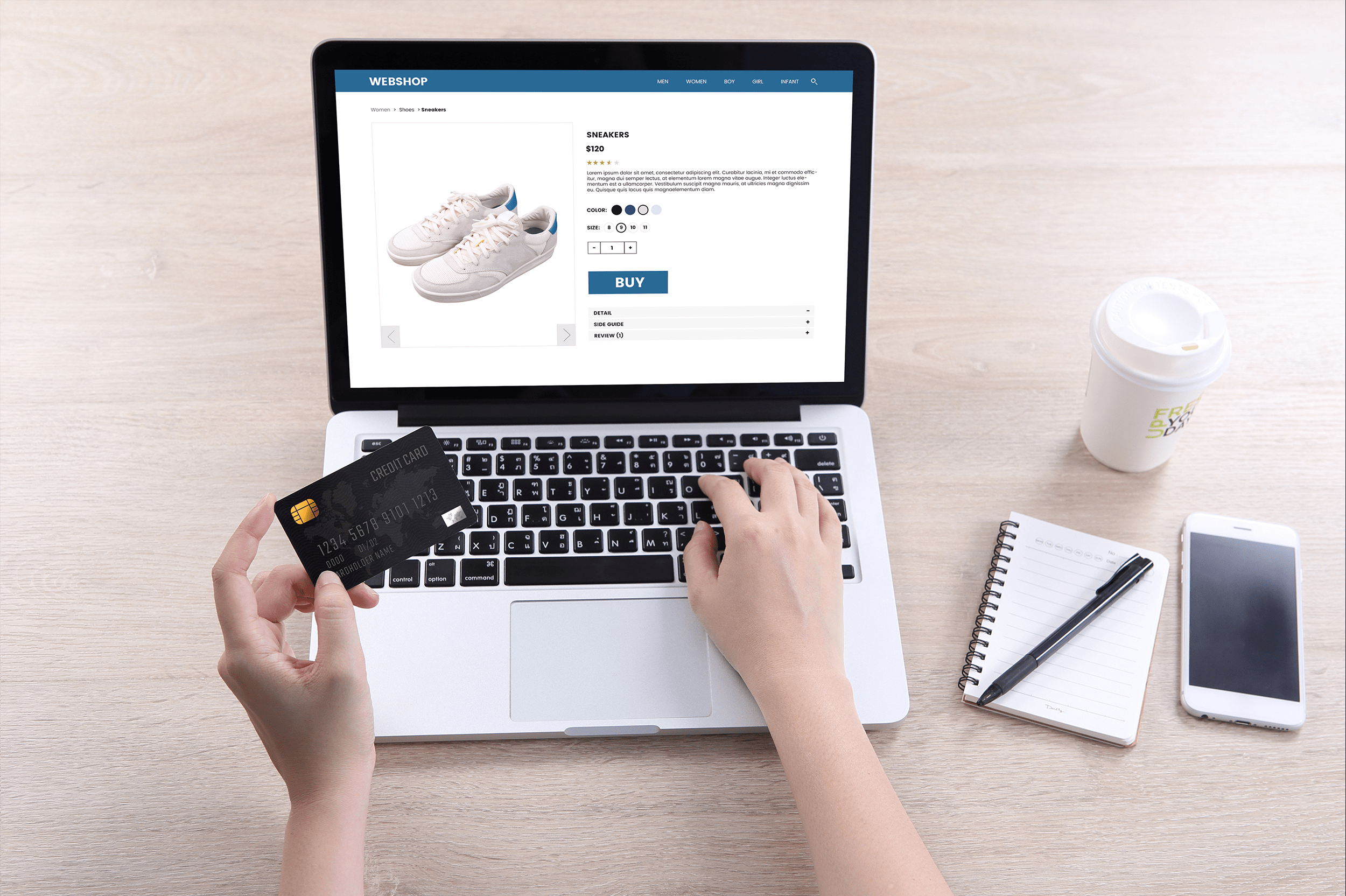為您的網站開發註冊表可能勢不可擋。您應該要求多少資訊?是您的表單嗎 視覺上吸引人和引人注目,但不是那麼侵入,它挫敗你的使用者,並導致他們從您的網頁反彈?您需要向註冊活動、時事通訊或接收有關業務更新的人員保持聯繫的最低資訊是什麼?它應該是一個 彈出視窗形式 還是靜態網頁?您的註冊表在您的整體中起著重要作用 數字戰略所以你想把它弄對
如果您曾經填寫過一份註冊表,要求填寫太多資訊,填寫資訊時出現混亂,或者不斷導致錯誤,儘管您多次嘗試猜測電話號碼或出生日期的正確格式,但您非常清楚設計不良的註冊表會對消費者對企業的看法產生多大的負面影響。顯然,您希望開發一個註冊表,在不關閉使用者的情況下捕獲所有基本資訊,引人注目且具有視覺吸引力,但不會過於侵入性,而且不需要使用者 eons 填寫和提交 - 因為,當然,您實際上希望他們完成他們的註冊,以便您可以 grow your email list.為了更多地瞭解行銷人員在開發註冊表時所犯的最大錯誤,以及您應該做什麼,我們聯繫了一個由數位行銷專家組成的小組,請他們回答這個問題:
"在嘗試開發註冊表單時,最大的錯誤是什麼?"
認識我們的數位行銷專家小組:
繼續閱讀,瞭解我們的專家在開發網站註冊表時可能犯的最大和最常見的錯誤(以及如何避免這些錯誤)。
亞瑟·伊努馬
亞瑟是 伊斯布克斯,一家市場領先的軟體開發和諮詢機構,為包括蘋果、耐克、歐萊雅、華納兄弟、雷克薩斯和紅牛在內的全球品牌提供服務。
許多開發人員犯了一個錯誤,即在沒有任何修改的情況下,將網路表單放入他們的移動應用程式中設計用於在大螢幕上使用滑鼠和鍵盤的表單在小型移動螢幕上效果不好。
一個主要問題是,在行動裝置上,某些形式沒有提供足夠大的觸摸目標。這可能導致用戶嘗試觸摸一個窗體欄位,但意外丟失並啟動相鄰欄位。
遵循最佳實踐設計準則。對於觸摸目標,蘋果推薦至少 44 x 44 圖元,谷歌推薦至少 48 x 48 圖元。
查理·沃拉爾
Charlie 在數位行銷領域工作了多年,並有幸成為 想像。,一個領先的數字機構。幫助企業成長和增加查詢是他們工作的核心。
"我經常看到的最常見的錯誤之一是,企業在其網站或時事通訊上使用多列形式研究表明,多列形式往往需要更長的時間來填充,看起來有點令人生畏,並具有更高的放棄率。但是,當利用單列形式時,您會發現人們完成它們的速度更快,並且更容易完成。表格的放棄率通常與表格的欄位數量和填寫表格所需的時間相對應。雖然這似乎有些牽強,但移動滑鼠是填寫表格所需時間的最大促成因素之一。如果您必須再次從左到右,或者從一列底部轉到另一列頂部,這可以為任務增加秒數。這幾秒鐘足以讓一些人中途退出,放棄你的表格。
相反,使用單清單單意味著使用者只需稍微向下移動,或者他們甚至可以使用選項卡鍵即可到達下一個字段。這意味著摩擦更少,使用者遇到的障礙也更少。
馬特·韋德爾
馬特·韋德爾是公司的業務發展經理 買家指南.
「我認為開發註冊表的最大錯誤是忽略了下拉清單設計的可用性為什麼?下拉清單是設計註冊表單的最有效元素之一。由於使用者已經得到了許多答案來選擇-它最大限度地減少了錯誤,避免了不必要的細節,並節省了用戶的時間思考適當的反應。
它只是減少了使用者在回答表單時的周轉時間。填寫登記表可能很乏味。我們希望盡可能多地以無憂無慮的方式獲取詳細資訊和資訊。添加下拉清單元素可以最大限度地提高使用者對表單回應的時間和效率,從而增強用戶體驗。
德里克·惠特克
德里克·惠特克是公司的營銷經理 埃斯通技術 並針對小型企業的 SEO 執行自由行銷分析和 WordPress 優化和評估。
我在許多公司構建註冊表時看到的最大錯誤是沒有將適當的分析集納入表單 我在不同的公司網站上看到過各種各樣的表格。有些會直接將提交到商業位址的電子郵件,有些會將資訊存儲在網站上的資料庫中,有些則同時這樣做。雖然其中一些表單為收件者提供了唯一的標識符,但令人驚訝的是,其中有多少表單沒有將此資訊發送到分析中進行會話跟蹤。有些網站仍然不向分析報告!
我發現,能夠將您的表單提交與分析聯繫起來,以便識別和處理會話活動捕獲的大量有助於業務實踐的數據,具有巨大的價值。大多數時候,一種形式的目標是為領先一代。您的潛在客戶並不總是想要填寫一個長長的侵入性表格。您可以通過使表單過於複雜而失去線索。簡單表單的另一面是,在第一次接觸之前,您沒有收集到足夠的提交資訊:這就是分析的用武之地。
透過在分析中使用事件報告,當您向追蹤器傳送唯一的表單提交 ID 時, 您可以辨識:
- 資料來源/中等:你的鉛從何而來?有機?直接?轉 介?
- 地理:他們的瀏覽地理匹配他們的表單提交?這是有用的ID時區一個很好的時間,通過電話跟進。
- 著陸頁:他們在您的網站上消費的第一部分內容是什麼?
- 頁面:他們在您的網站上訪問過哪些頁面?
- 每個會話頁面/現場時間:他們消耗了多少內容?
- 外部事件觸發器:它們是否按一下了您的社交媒體頁面?尤圖貝?它們向下滾動特定頁面的程度如何?
瞭解您的鉛來自何處,以及他們正在消耗哪些類型的內容,可以説明您為初始聯繫點做好準備,並在第一次接觸時透露有關您的鉛的更多資訊。您的銷售代表應進入第一次聯繫,盡可能多地了解客戶。
喬·特雷爾
喬·特雷爾是創始人 漂流.他是一個網路開發者和企業家。
'開發註冊表單的最大錯誤是為手動輸入設定了太多的欄位用戶註冊所需的努力越多,他們完成表單或被其他任務分心的可能性就越大。
如果您真的需要您要求的所有資訊,請使其易於訪問(首先要求拉鍊,一旦指示,自動填寫國家和城市等欄位),並考慮通過提供選擇選項來減少手動輸入。相信我,用戶誰欣賞他們的時間會很看重它!
斯蒂芬·鮑德溫
斯蒂芬·鮑德溫是 AssistedLivingCenter.com,為全美超過10,000個高級社區提供營銷服務的公司。
在試著開發註冊表時,最大的一個錯誤是嘗試從頭開始建構它,而不是尋找現有的解決方案現有的解決方案通常可以定製,當您使用現成的產品時,您將受益於一系列優勢。例如,通過開發人員的經驗獲得的學習可以產生比您想像的更好的做事方式。它可能更便宜,您還可以與其他使用者分擔未來改進的成本。但最有價值的是,你更快地完成工作,並有更多的時間專注於你的專業領域,在那裡你可以獲得更好的投資回報率。
亞倫·西蒙斯
亞倫·西蒙斯是 測試準備精靈.他相信學習聰明,而不是努力學習才能成功。在 部落格 ,亞倫分享如何培養更聰明的學習習慣的技巧和竅門。學習如何以正確的方式測試準備。參加任何考試,離你的教育或職業目標更近一步。
人們沒有意識到提出問題是多麼重要當您通過階梯式問題將表格拆開時,即使一個人/她放棄了表格,您也可以捕獲他/她的電子郵寄地址。另一個好處是,消費者在一次只出現一兩個字段時,往往以更高的匯率進行轉換。
喬蒂·雷
喬蒂·雷是 WPMyWeb.com.他寫博客,聯盟營銷,電子郵件行銷等。
「 在制訂登記表時所犯的最大錯誤之一,是只使用佔位符,而沒有標籤。標籤告訴使用者在窗體欄位中放置哪些資訊,並將其放置在框外。另一方面,占位符文本位於表單欄位內,提供其他提示。但是,通常看到許多設計人員僅使用佔位元文本來描述註冊表的輸入欄位。這看起來可能很清楚,但可能會損害用戶體驗。
當使用者在表單欄段中鍵入某樣東西時,占位符文本就會消失。而且,如果用戶忘記了提示,他必須刪除他寫的內容。此外,如果表單足夠長,使用者在提交表單之前無法檢查其輸入。
戴瓦特·德霍拉基亞
戴瓦特·德霍拉基亞是 莫焦的力量.
"在開發註冊表時,您應始終標記所需欄位,並包含帶有準則的文本。占位符文本也很有用。 我的觀察是,在建立註冊表時,您可能犯的頭號錯誤是忽略了向人們提供正確填寫註冊表所需的資訊 如果您需要一個六個字元長的密碼,請在嘗試提交密碼之前確保他們知道這一點。如果您要求他們輸入位址,請用紅色星號標記欄位。人填寫表格的速度越快,你完成註冊的機會就越大。當人們感到沮喪時,他們會放棄註冊表,放棄您的產品或服務。
艾比·赫爾曼
As 快照的 艾比戰略總監尋求途徑,定位他們的客戶和機構的成功。投資回報率是她的北極星,玉米餅是她的繆斯。當她不和她的同事談論數位趨勢或贊助動物時,你通常會發現她和她的丈夫和她的狗漢克在家裡放鬆,同時享受一杯白葡萄酒。
"你會認為登記表很難搞砸,或者你可能會忘記簡單的問題,如年齡、性別或任何其他人口統計學。但是,作為行銷專家, 不要求使用者訂閱電子郵件清單 (我們的或我們是否代表客戶工作)是最嚴重的錯誤。
任何填寫某種線上註冊表的人都已經添加了一封電子郵件來接收確認。但有些人(企業主)會忽略最簡單的任務,詢問他們是否希望在未來收到任何更新或特別促銷,錯過了大量的"是"回應。這意味著潛在的收入損失,因為那些絕對願意註冊的人根本就沒有。電子郵件清單是您為企業所能擁有的最強大的東西之一,因為這些人不僅同意在該清單中,而且他們還想要您正在銷售的產品,無論它是產品還是服務。
如果你不問,你永遠不會知道或收到它,這是事實,所以在創建註冊表時,請確保不會犯這個錯誤。總是問他們是否想成為你的社區的一部分,並記住,工作不會就此止步。隨著時間的推移,建立這種關係很重要,因此,如果您正在構建該電子郵件清單,您必須定期與他們聯繫,否則他們要麼忘記您(壞),要麼將您標記為垃圾郵件(更糟)。
喬倫·伍特斯
喬倫·伍特斯是 查蒂米茲.
最大的錯誤是註冊表以公司為中心註冊表的製作者主要考慮一件事:「公司希望使用者提供哪些資訊?但是,您應該思考:『註冊需要哪些資訊?相信我,在大多數情況下,這隻是一封電子郵件和密碼。
在許多情況下,註冊表要求使用者提供大量資訊。這使得填寫表格變得無聊,並可能導致很多用戶無法填寫表格。但是,當您查看註冊真正需要的具體資訊時,通常並不多。
此外,許多登記表包含一些重複的問題。例如,當您詢問他們公司的網址時,您可能不需要詢問他們公司的名稱,因為您可以在他們的網站上看到此資訊。詢問使用者的公司有多少員工也是如此,因為這個問題通常可以通過簡單的LinkedIn搜索來回答。
羅伊·莫雷洪
羅伊·莫雷洪是公司總裁兼聯合創始人 事件合作夥伴,一家全方位服務的產品開發公司和行銷機構。
行銷人員在註冊表上可能犯的最大錯誤是關閉自動灌載自動填充通過填寫個人資訊部分來節省時間,該部分包含您的企業所需的所有關鍵數據。由於輸入個人資訊可能是重複和無聊的,缺乏自動填充功能可能會阻止人們完成表單或導致他們犯錯誤。但是,您可以放心,輸入的資訊是準確的自動填充,更多的使用者將成功地提交他們的註冊。
克裡斯塔普斯·布倫坎斯
克裡斯塔普斯·布倫坎斯是首席行銷官 在地圖上.
"當涉及到鉛生成表單和著陸頁時,您的主要關注點應該與副本的質量相關記住頁面的主要目標,即影響和說服人們採取否則不會採取的行動。我想說,在製作成功的表格時,我在行銷生涯中犯的最大錯誤是沒有像我應該的那樣重視銷售副本。無論您是登陸頁面、銷售頁面,還是試圖讓 Web 流量填寫註冊表,副本都是您的生命線。我對文案的瞭解越多,我的轉化率就越高,我就越能影響潛在客戶採取行動。研究文案,但不要過於複雜。不是一些丟失的藝術需要幾年的時間才能掌握:它真的只是銷售的書面文字。
瑪麗娜·瓦蒙德
瑪麗娜·瓦蒙德是創始人和商業房地產投資者 財產現金.
"不要使用卡普查:改為使用重新驗證 CAPTCHA 是驗證使用者是人還是機器人的最佳方法之一。使用 CAPTCHA 可防止垃圾郵件,並確保收集的表格提交是高品質和純正的。然而,CAPTCHA可能很煩人,即使是人類也是如此。當使用者遇到 CAPTCHA 太多時,他們可能會在不提交任何資訊的情況下離開表單。
我建議改用再驗證碼。RECAPTCHA會歪曲單詞並將它們數位化,因此只有人類才能理解文本,而機器人會發現很難處理。標準的 CAPTCHA 技術更為複雜,從視覺謎題到數學題,這些技術對人類用戶來說更加麻煩。
馬丁·奧雷菲斯
馬丁·奧雷菲斯是 租給自己的實驗室.
「你可以犯的最大錯誤是建立一個緩慢載入的形式 大多數互聯網使用者都對快速載入的應用程式、網站或應用程式產生了強烈的偏好。人們把任何數位與速度和便利聯繫起來,所以如果你有一個緩慢載入的形式,人們可能會退出,而不是浪費他們的時間。
改進表單載入時間的最簡單方法之一是降低所有媒體檔的大小。以形式添加圖像和視頻對用戶來說是一種視覺刺激的享受,但它也會影響載入時間。將照片轉換為較小的解析度檔並應用緩存技術是減少延遲和載入時間的兩種好方法。
邁克·內梅羅夫
邁克·內梅羅夫是首席執行官兼聯合創始人 拉什訂單發球.
在開發線上註冊表時,最大的錯誤就是沒有進行徹底的使用者測試當您為您的網站嘗試新的表格和頁面(包括註冊和註冊表單)時,您應該始終進行某種使用者測試,以確保與您的網站無關的真實在線用戶能夠導航它並填寫表格,而不會出錯。使用者測試允許您在網站上獲得其他一組眼睛,以説明您修復錯誤或解決問題,或者至少讓您知道表單足夠好。
你不想要的是保存這些錯誤和演練,當你已經處理和失去線索或客戶。網站和註冊表實時顯示時,應完成用戶測試,分析結果,對問題進行評估和修復。進行這些測試將使您能夠確保您的用戶體驗是最好的。
內森·塞巴斯蒂安
內森塞巴斯蒂安是一個內容行銷與 好公司,一個B2B研究和審查平台,總部設在華盛頓特區。作為 GoodFirms 的內容專家,他負責 IT 行業和技術使用者的市場研究、數據演示和相關內容的準備。
形式開發中最大的錯誤是無法提供即時資料驗證,最好是"內聯驗證"在兩種類型的驗證中-"提交驗證后"和"內聯驗證",後者是減少形式摩擦的更好方法。對於前一種方法,在使用者按下"提交"按鈕后發送確認消息或一組錯誤消息。有時,堆積的錯誤消息可能會變得相當惱人,導致用戶放棄表單。
通過內聯驗證,使用者在進入下一個字段之前,會立即收到有關某個字段的任何混亂的警報。錯誤消息必須清晰禮貌地解釋該特定領域的問題,並鼓勵使用者迅速採取行動。
通過精心設計的形式驗證,您可以消除使用者對資訊錯誤消息的不滿。它使填寫表格更具對話性,最終增強用戶體驗。
切爾西·科恩
切爾西·科恩是 索斯托克德.
「 在試圖開發登記表時,我最大的錯誤是出生日期我沒有意識到這將是如此繁瑣!當我輸入該格式時,我在發佈表單后意識到,訂閱者必須不斷按下回其誕生年份,而不是簡單的下降。即使輸入它也會更快。
我們這裡有一個巨大的落點。60 年代末出生的人已經足夠回擊、回擊和回擊了。在發現了這個巨大的落點后,我們深入分析了頁面,並注意到了這個出生日期格式。
西蒙·埃爾克約爾
西蒙·埃爾克約爾是首席行銷官 阿夫克斯珀滕,丹麥最實惠的電子產品的發源地。
在開發線上表格時,人們可能犯的最大錯誤之一是無法讓每個人都可以使用在設計表單時,我們都應該小心選擇顏色、字體的大小,並確保我們擁有所有正確的 HTML 元素。實施此類更改不僅會使受眾對您的服務更加滿意,而且是我們都應該堅持的責任。
戴夫·尼爾森
戴夫是創始人和董事 轉換的點擊 和數字營銷專家。他是創新的吸盤,有創造力的天賦。同樣,可以公平地說,他是一個資訊迷,致力於改變數字環境。
「 建立註冊表時,最大的錯誤是要求太多的資訊」。這意味著擁有三個以上的欄位。在創建註冊表單時,重要的是要瞭解"少即是多"。當您通過註冊建立第一個聯繫點時,您不會希望聽起來過於侵入。觀眾討厭這樣,不太可能對您的品牌形成正面印象。您需要給人們空間,並在請求資訊時注入輕鬆的氛圍。它應該是順利和容易的。
根據 Quicksprout 的說法,通過將欄位限制為只有三個字段,您可以驅動最低轉換率 25%。同樣,另一項研究由 中心點 提到,通過將欄位數量從4個減少到3個,可以將轉化率提高50%。因此,不難猜出,在註冊表中有六到七個字段會阻礙您的成功。堅持黃金數位三,你一定會看到良好的轉換率通過註冊表。
馬克斯·哈蘭。
馬克斯·哈蘭是。 牙科。 和營銷專家
在開發註冊表單時,您可能犯的最大錯誤不是建立令人信服的 CTA大多數營銷人員對創建行動號召的想法相當放鬆。對他們來說,這不是提高轉化率的很大一部分。現在,這是一個大錯誤,因為 CCA 可以説明您即時吸引注意力。擁有可吃的 CTA 會迫使用戶單擊它。它應該是強大和吸引人的。
陳詞濫調的 CTA 時代已經結束,比如"瞭解更多","知道更多"和"點擊這裡"。是時候獲得創意和工藝可銷售的 CCT 了。例如,如果您是一家提供在線課程的公司,請使用類似"立即開始上課"之類的內容。它立即留下強大的衝擊力,並説明您立即引起注意。同樣,如果你是一個行銷公司,"獲得結果"是一個偉大的CTA。它之所以有效,是因為它利用了希望鞏固在線成功的企業的相關需求。
所以,不要低估有吸引力的 CTA 的力量。利用它們為您的行銷努力插上翅膀。
塞拉·洛夫林
火地島是首席行銷官 十二生肖指南占星術知識庫
行銷人員在建立註冊表時犯的最大錯誤是沒有使用熟悉的佈局用戶填寫了如此多的表格,他們期望看到名字和姓氏的典型佈局,以及名稱下的電子郵件。
如果佈局試圖通過使用不尋常的分組來"重塑車輪",使用者將感到困惑。他們甚至可能不信任該網站,並決定不提供他們的聯繫資訊。因此,與其嘗試製作獨特的表單,不如使用標準格式。
傑夫·沃克
傑夫·沃克是 加拿大最佳VPN,加拿大最大的互聯網隱私網站之一。
"在用戶參與度方面,您的網站註冊表必須完美地執行其工作。作為一名數字企業家,我知道網站的註冊表至關重要。 大多數數位行銷人員在嘗試開發註冊表時未能避免的最大錯誤是將"註冊"和"登錄"一起使用。一眼望去,發現這兩者的區別是令人困惑的 在我的註冊表中,我從未一起使用"登錄"和"註冊",因為它只會使用戶感到沮喪。你需要明白,這兩個是相當接近,幾乎相同。有了它,您的使用者可能會單擊錯誤的按鈕,而不是其他按鈕。這裡的關鍵是不要讓使用者暫停並考慮單擊哪個按鈕。不惜一切代價,他們不應該花額外的幾秒鐘的時間來區分螢幕上兩個按鈕之間的差異。因此,不要使用"登錄",而是使用"登錄"。然後使用"註冊"而不是"註冊」。通過這樣做,您使按鈕彼此更加可識別,為使用者提供無縫體驗。
填寫表格應該很有趣。在設計表格時,您應該將使用者的便利放在第一位。它只是意味著不要浪費他們的時間或令人沮喪的點擊錯誤的按鈕。一切都應該是清晰和互動的。永遠記住,第一次互動是至關重要的:因此,你必須不犯錯誤,應該努力減少所有的障礙。
劉泰德
劉德是公司的創始人兼首席執行官 只是搜尋引擎優化.
在試著開發註冊表單時,最大的錯誤是無法確保表單載入到每個瀏覽器、每個裝置上為了最大限度地完成您的表格,您需要使註冊人非常方便。請記住,他們點擊關閉按鈕比繼續填寫表格更容易,因此您最好盡可能快速和輕鬆地完成流程。讓他們切換到其他瀏覽器或其他設備會自動使您處於不利地位。
亞倫·海恩斯
亞倫 · 海恩斯是首席執行官 洛加尼克斯.它們為機構和企業提供數據驅動、注重行動的 SEO/SEM 解決方案,以優化和簡化其內部流程和交付。
嘗試使用註冊表來改進網站的 SEO 是我在數位行銷中犯的最重大錯誤之一我們嘗試了一段時間的這個想法,但它從來沒有完全工作。Web 註冊表單意味著簡單、乾淨和簡單,這就是為什麼它不是推動 SEO 的好地方的原因。它只是使註冊表更加複雜和煩人,並迫使用戶遠離它,這就是為什麼我們很快就放棄了它。
艾米莉·貝紮克
艾米麗 是一位屢獲殊榮的行銷、品牌和內容策略師,在內容創作、成長行銷和領先的高性能創意團隊方面擁有豐富的經驗。
「在制訂登記表時所犯的最大錯誤之一,就是在申請登記前,先連到其他網頁。我發現很多活動註冊頁面(和登陸頁面,一般)有超級連結到網站上的其他網頁,甚至其他網站完全。分享與活動相關的資訊很棒,但首先您需要讓被俘虜的受眾在您的頁面上註冊。而不是註冊頁面本身的連結,只給您的觀眾一個選項:註冊您的活動。然後,註冊后,將相關資源和連結放到註冊資訊完成後顯示的確認郵件中。
賽斯價格
賽斯·普萊斯是 價格貝諾維茨有限責任公司 以及藍沙克數碼的創始人兼首席執行官。Seth 將一家雙人律師事務所轉型為一家 40 人的律師事務所,現在利用同樣的精力發展了專注於法律部門的數字機構。
"由於律師-當事人特權和潛在影響,這在法律實踐中是一個非常敏感的話題。在回復登記表時,個人可以解釋他們正在僱用或與其律師交談。從技術上講,在簽署律師-當事人代表表格之前,他們不是他們的律師。長話短說, 律師事務所在創建登記表時應非常明確,即該登記表不屬於律師-當事人特權範圍,個人不應披露任何私人或機密內容 這保護了雙方,並清楚地表明,這種形式將引發進一步的溝通。
伊恩·塞爾斯
伊恩·塞爾斯是首席執行官兼創始人 返利鍵.
「注意註冊頁面上的使用者體驗副本」。UX 寫作是一個正在出現的新領域。良好的用戶體驗編寫使您的前景更容易註冊您的服務。確保您注意頁面上的小細節,以確保您的用戶能夠輕鬆地完成該過程。
不要用一堆窗體欄位壓倒使用者。如果您需要向使用者詢問大量資訊,最好是分步操作。如果有人登陸您的註冊頁面,看到15個不同的欄位,他們必須填寫,他們會下車。
夏洛特·謝里丹
夏洛特是創始人 小比茲專家,一家致力於幫助中小企業成長的行銷機構。
在整理註冊表時,最大的錯誤是沒有考慮您的受眾在銷售漏鬥中的位置例如,如果您在漏鬥廣告活動頂部的著陸頁上運行註冊表(您的受眾還不太瞭解您),在註冊表上詢問他們的生活故事可能會阻止他們取得聯繫。相反,如果您希望將時間真正集中在可能轉換的線索上,最好有一份較長的註冊表,以確保他們投入更多,而不是將銷售團隊的時間浪費在那些不太可能感興趣的人身上。
開發轉換的註冊表單並不難。 ShareThis 已與戰俘合作,使他們的 網站彈出式構建器 可提供給 發佈者 直接從我們的平臺,這樣你就可以在短短幾分鐘內創建功能,視覺吸引力,和有效的註冊表單,彈出視窗,等等。

































